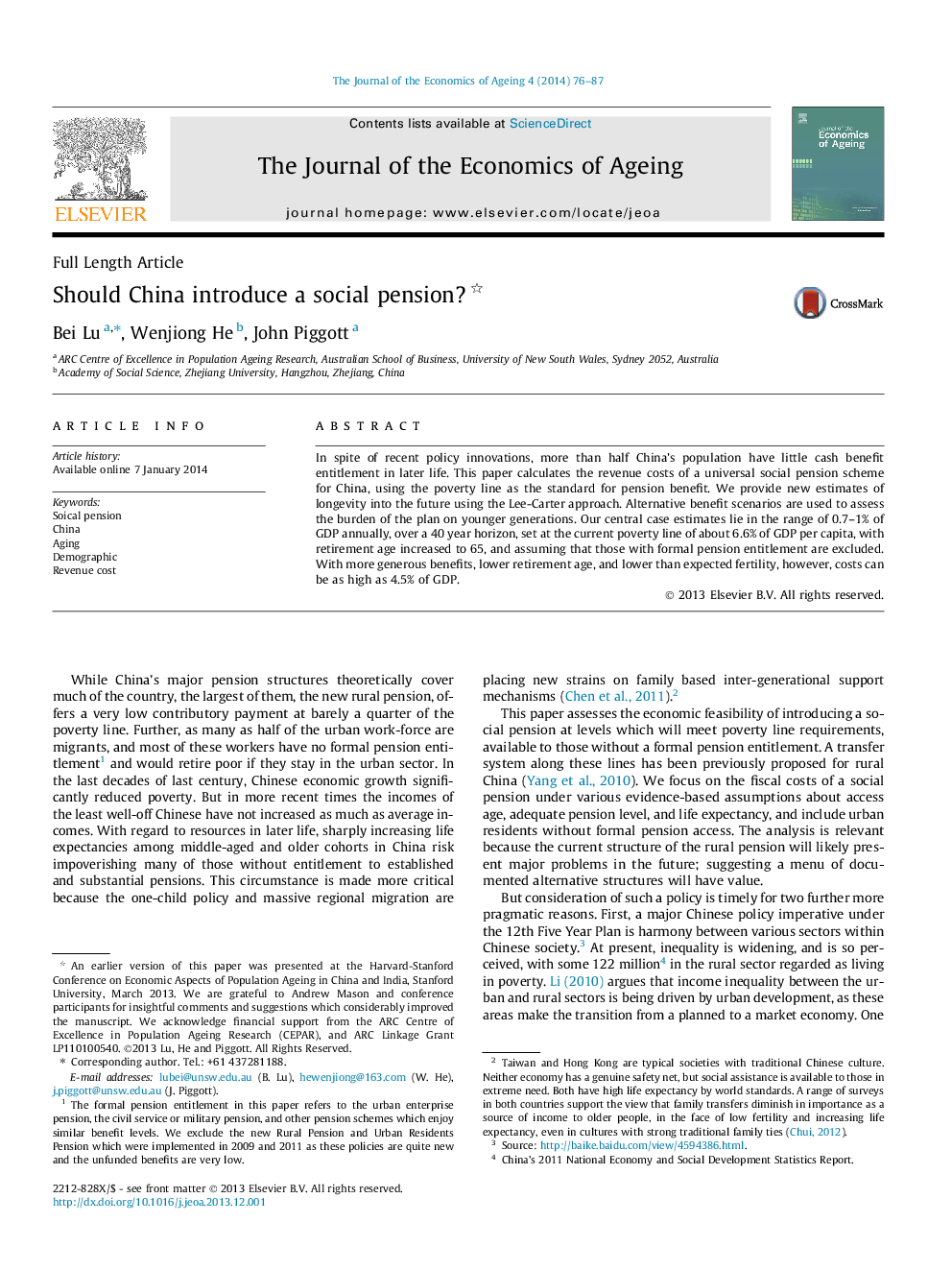| Article ID | Journal | Published Year | Pages | File Type |
|---|---|---|---|---|
| 957843 | The Journal of the Economics of Ageing | 2014 | 12 Pages |
Abstract
In spite of recent policy innovations, more than half China's population have little cash benefit entitlement in later life. This paper calculates the revenue costs of a universal social pension scheme for China, using the poverty line as the standard for pension benefit. We provide new estimates of longevity into the future using the Lee-Carter approach. Alternative benefit scenarios are used to assess the burden of the plan on younger generations. Our central case estimates lie in the range of 0.7-1% of GDP annually, over a 40Â year horizon, set at the current poverty line of about 6.6% of GDP per capita, with retirement age increased to 65, and assuming that those with formal pension entitlement are excluded. With more generous benefits, lower retirement age, and lower than expected fertility, however, costs can be as high as 4.5% of GDP.
Keywords
Related Topics
Social Sciences and Humanities
Economics, Econometrics and Finance
Economics and Econometrics
Authors
Bei Lu, Wenjiong He, John Piggott,
